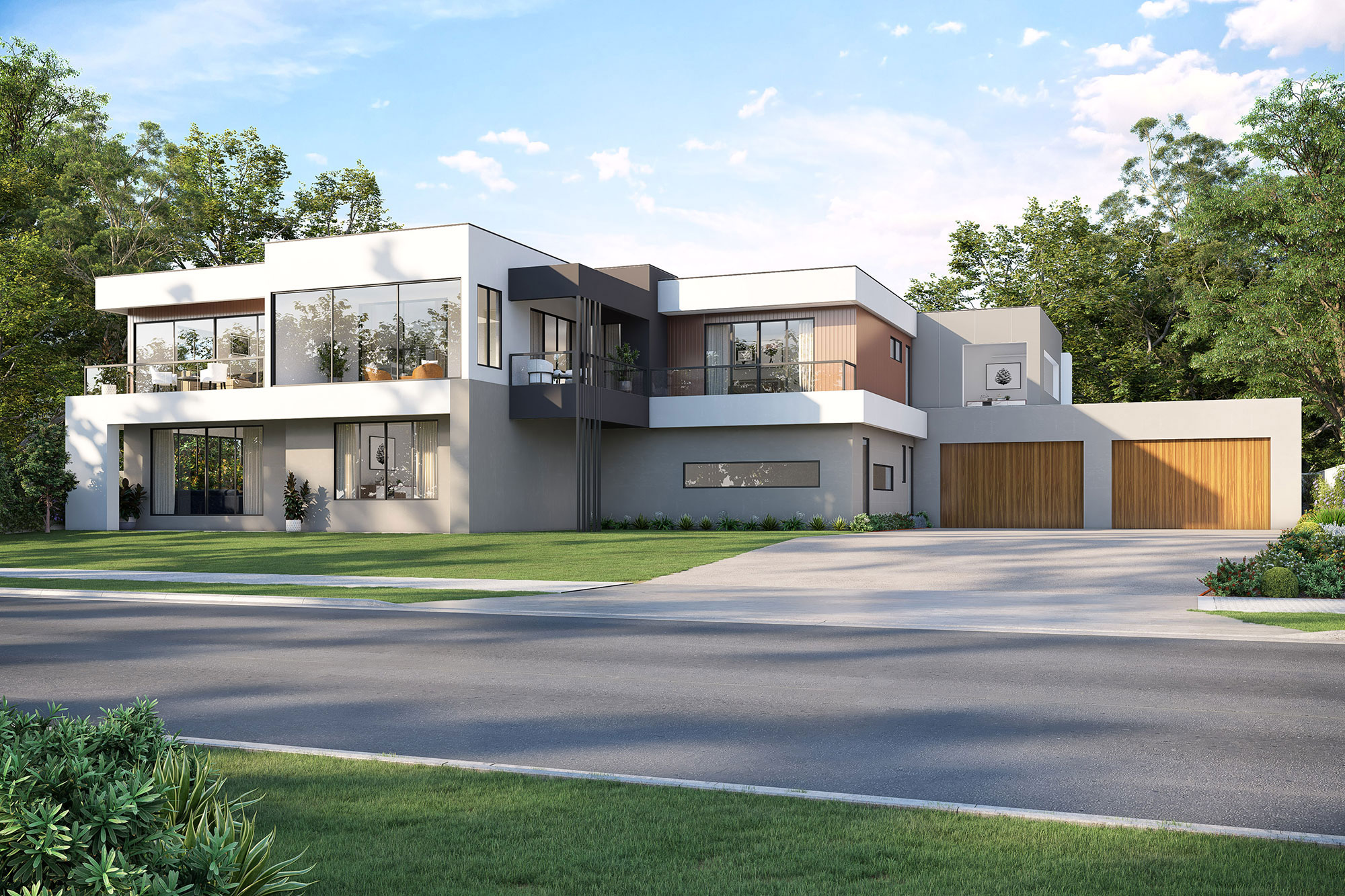3D rendering is a form of virtual photography that uses software to create photorealistic images of objects. It’s a creative way to showcase a structure, an idea, or even an abstract concept before a design is constructed. It is applied in various industrial sectors, including architecture, building, automotive, engineering, entertainment, and even healthcare, such as medical imaging. 3D rendering benefits users’ visualisation of a product or idea before it is entirely manufactured. 3D rendering is a hugely lucrative arena that can offer innumerable benefits to individuals and businesses.
The 3D rendering process creates computer-generated imagery. The image is usually displayed on a computer screen, allowing people to view it from different camera angles to create photo-realistic images. 3D rendering can drastically change how clients or potential customers perceive your product’s design ideas. 3D rendering uses special software tools that create images from computer-generated models. It provides the means to visualise a photo-realistic image of the final image instead of creating a physical replica.
- Differences between 3D and rendering
- Offline rendering vs. real-time rendering
- Render engines and game engines
- What are the benefits of the 3D Rendering process
- Uses of the 3D rendering process
- 3D Rendering for Architecture
- 3D Rendering in Games
- Interior Design and 3D rendering
- 3D rendering for the Entertainment industry
- Real-time rendering for games
- Benefits of 3D Concept Design for game creators
- Medical visualisation in 3D rendering process
Differences between 3D and rendering
The distinction between 3D and rendering is that 3D is a technique, whereas rendering generates an image from a model. The process begins with 3D, but it concludes after all of the model’s details have been added.
You can do rendering in various ways, one of which is raytracing, which is a very realistic process for defining the appearance of your model.
Rendering does not imply that it is only for imagery; you can also create movies or animations if desired. Rendering is an essential part of the design process as well as presentation.
Offline rendering vs. real-time rendering
Online or real life is a technique in computer graphics where the image is rendered in real-time using a graphics card and computer software. For instance, when you play a game on your PC or laptop, the GPU and CPU of your computer do the rendering.
It largely relies on dedicated graphics hardware, and scenes can also be viewed from multiple angles simultaneously, allowing for a more interactive experience.
Offline rendering is generally used to generate still images or movies for product design or architectural visualisation applications. It does not use real-time processing.
Higher quality can be achieved by using more computer processing power and enabling the renderer to run for a more extended period. It allows for additional visual effects which are not viable with real-time renderings, such as soft shadows, depth of field, etc.
There are two main types of software often used to create 3D-rendered images.
Render engines and game engines
Ray tracing is a technique used by render engines. Ray tracing generates images by projecting light beams from the camera and then tracing the path of those beams to create the image. The process is time-consuming, but it generates the most accurate results.
Rasterisation is a technique in which the game engines compress a 3D image into 2D pixel data and then colour them based on their distance from the camera. It’s fantastic for moving around in real-time, but not so much for creating static images.
What are the benefits of the 3D rendering process
Are you familiar with the concept of 3D rendering? Most people know it as ‘visualisation’, but this term is often used interchangeably with ‘3D rendering’. This is because we view images: only two dimensions at a time, and each eye perceives these two dimensions differently.
Thus, images can easily trick our minds into thinking one thing or another based on which angle we’re looking from — but a 3D rendering allows us to view the object from all angles simultaneously.
3D rendering is a powerful tool for creating realistic images of your product, and it’s an affordable and effective way to bring your ideas to life.
3D rendering offers many benefits that cannot be achieved by basic photography. They include
- Cost
- Time
- Accuracy
By using 3D rendering, you can develop architecturally accurate models much faster and at a much lower cost. In some cases, you can create a model in a day that would have taken weeks to produce otherwise.
It is also more economical because it’s faster to make changes, create many more options, and waste fewer resources.
With different 3D rendering techniques, you can add reflectance, shadows, and textures to the raw CAD model to perform various photo-realistic simulations of the product that can present lighting intensity effects and visual aids inside or outside the project.
Uses of the 3D rendering process
3D rendering is available for construction projects in many industries such as architecture, interior design and real estate. From product design to architectural visualisation, 3D rendering methods allows presenting an idea as a photo-realistic image.
Since there are so many different uses for realistic rendering, here is a list of industries that use 3D rendering software to create photo-realistic images.
- Architectural visualisation
- Entertainment- video games and animation
- Real estate- interior design
- Healthcare -medical visualisation
- Automotive design
3D rendering for architecture
One of the most common uses for the 3D rendering process today is architecture and design. For example, architects use renderings to visualise their conceptual ideas alongside technical drawings before construction begins on a building project. Renderings allow them to see a rendered image of how the final image of the building will look and make necessary changes.
3D rendering in games
The video game industry has been using 3D models for many years; however, it seems like only recently that their power to create a photo-realistic image has become evident to everyone.
It has been partially due to the rise of virtual reality (VR) and augmented reality (AR) experiences, which require practical 3D visual effects to trick the human eye into thinking it is seeing a real object.
Interior design and 3D rendering
If you are an interior designer, architect or just a general design professional, you are always trying to find ways to help your clients see the vision that you have. You spend time thinking about the layout and design of a space and might even draw it on paper.
But sometimes, seeing a drawing in 2D isn’t enough to sell your client your ideas. It is where 3D rendering or digital model can be so beneficial. Here are some reasons why 3D rendering has become more popular over the years:
- Gives a clear idea of the final project.
- Customisation becomes easier.
- Increase in property sales.
- You can save money by using 3D renderings instead of building physical models.
- Create multiple variations at no additional cost.
- Easily and quickly make changes to the original design.
3D rendering for the entertainment industry
3D concept design for animation has many benefits. You can still use 2D concept art to help tell your story, but 3D offers you more options and control when creating your storyboards.
It’s easier for directors and producers to understand the final product because they can view it 3D. 3D models also allow you to make changes more quickly and easily.
Real- time rendering for games
In 3D gaming, the objects are pre-rendered at the highest level of detail and colour depth possible before being displayed in computer games. Game developers use real-time rendering.
The developer creates a game that keeps up with the user’s movements while playing it. The computer has to render fast enough to create 30 frames per second (FPS) or more to produce smooth and convincing motion in real-time rendering.
Benefits of 3D concept design for game creators
1.Improved Productivity through a coordinated effort
A significant benefit of using models is that multiple people can work on them at once, making it easier to coordinate efforts on a large project without having everyone working in the same room at all times.
2.Improved design communication
When you create a 3D model that can be viewed as a photo-realistic image, you give your clients the ability to see what your design looks like in real life. It can help improve communication between you and your clients, which helps keep on track with their expectations. It also helps make it simpler for them to provide feedback, helping the interior designers to scale models to impressive heights.
3. Cost-effective
Using this 3D rendering technology, animators can significantly speed up the production process. If you want to make changes, you can easily do so without re-engineering the entire model or starting from scratch, which is much more time-consuming.
Medical visualisation in 3D rendering process
Visualisation has become an essential part of medical research, and 3D rendering is a powerful visualisation tool.
3D renderings can be used to visualise complex anatomical structures that are difficult to understand by looking at still images. Different image modalities are often used to create a 3D concept design.
3D concept design for medical visualisation:
1. Medical Imaging
Computerized Medical Imaging such as CT, MRI and Ultrasound images provide essential information about diagnosis and treatment. Different image modalities are often used to create 3D image designs.
For example, CT and MRI images might be utilised for soft tissues and bones, for example, musculoskeletal and sports injuries. Different colours or textures can be applied to each imaging modality, allowing you to visualise the various structures within one image.
2. Infusion of 3D rendering for Medical Visualisation with animation
3D rendering and animation increase with each passing year in the medical world and scientific research. The more doctors can see inside the human body using 3D images, the better they can understand how it works. It allows them to make better decisions about treating patients and conducting surgeries.
How can you male your delelopment or property look it’s absolute best to potential buyers or investors?
At 3D Walkabout, we create stunning 3D renders that will show your development in the best light possible. With our Premium quality renders, you can be sure that your potential investors will be impressed.
Get in touch with 3D Walkabout for a professional 3D rendering service that will help you achieve your marketing goals. We offer instant quotes and discounts for large orders, so contact us today for a quote!


